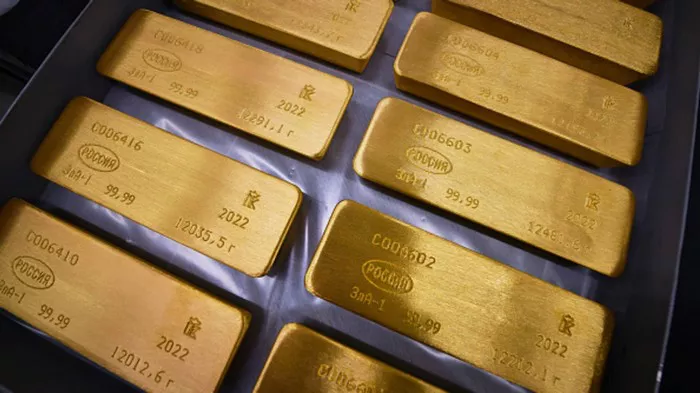In a landmark moment for the precious metals market, gold futures have soared to unprecedented heights, surpassing the significant threshold of $2,700 per ounce. This remarkable achievement not only establishes a new record for gold but also represents the highest monetary value ever reached by any precious metal in history, including silver, platinum, and palladium.
Record-Setting Trading Day
On a pivotal trading day, the most active December contract for gold futures opened at $2,681.20. After experiencing some fluctuations, it settled at $2,695.10, marking a notable gain of $13.80, or 0.51%. The intraday high of $2,708.70 per troy ounce underscores gold’s enduring appeal as a safe-haven asset amidst a climate of economic uncertainty. This unprecedented price level highlights not only gold’s intrinsic worth but also the declining confidence in global fiat currencies.
Factors Driving the Surge
The steady ascent of gold prices can be attributed to a confluence of factors, particularly recent interest rate decisions by central banks. A significant catalyst for gold’s rally has been the Federal Reserve’s recent 50 basis point cut to its benchmark Fed funds rate, which now stands in the range of 4.75% to 5%. This decision, echoed by other central banks worldwide, has been pivotal in fueling the precious metal’s upward trajectory.
Market sentiment is further buoyed by expectations of additional rate cuts in the near future. According to the CME FedWatch Tool, there is a 51.1% probability of another 50-basis point cut at the Federal Reserve’s upcoming November 7 FOMC meeting, while the remaining 48.9% leans towards a 25-basis point reduction. This anticipation of continued monetary easing has bolstered gold’s appeal as a hedge against potential currency devaluation.
Awaiting Key Economic Indicators
Investors are now keenly awaiting the release of the Personal Consumption Expenditures (PCE) report, a crucial inflation indicator closely monitored by the Federal Reserve. Economists surveyed by Dow Jones and the Wall Street Journal predict a continued contraction in annual core inflation, forecasting a decline to 2.2% in August from 2.5% in July. Such a trend would represent a significant deceleration from the 40-year high recorded in June 2022, potentially strengthening the case for further rate cuts.
The Core PCE Price Index for August is expected to show a modest 0.2% increase month-over-month and a 2.7% rise year-over-year. These core figures, which exclude volatile food and energy prices, are particularly significant as they represent the Federal Reserve’s preferred gauge of inflation.
The Implications of Gold’s Historic Run
As gold continues its historic run, market participants are closely monitoring these economic indicators and central bank policies. The precious metal’s performance reflects not only its traditional role as a store of value but also the complex interplay of global economic forces shaping today’s financial landscape.
In conclusion, the surge past $2,700 per ounce signifies not only a monumental milestone for gold but also highlights broader economic trends and investor sentiment in an increasingly uncertain world. As central banks signal potential monetary easing, gold is poised to remain a focal point for investors seeking stability and value.


